-
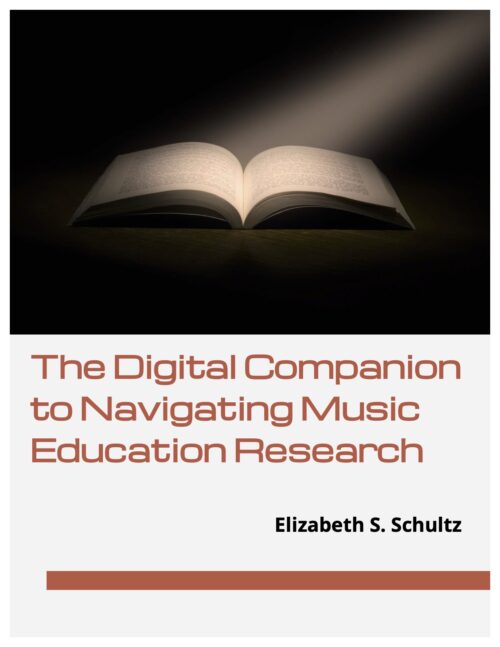 This is an eBook for digital download (82 pages + editable resources) Reading, writing, and conducting research can feel overwhelming. But it can feel especially overwhelming if you’re brand new. This book is the jargon-free field guide, companion, and resource for music education research so that you don’t have to keep emailing your professors.
This is an eBook for digital download (82 pages + editable resources) Reading, writing, and conducting research can feel overwhelming. But it can feel especially overwhelming if you’re brand new. This book is the jargon-free field guide, companion, and resource for music education research so that you don’t have to keep emailing your professors. -
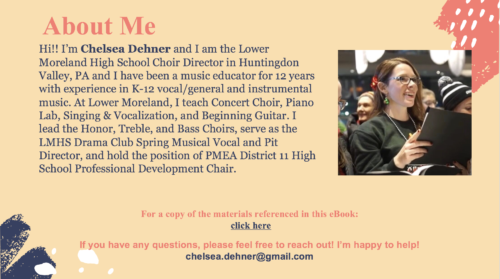
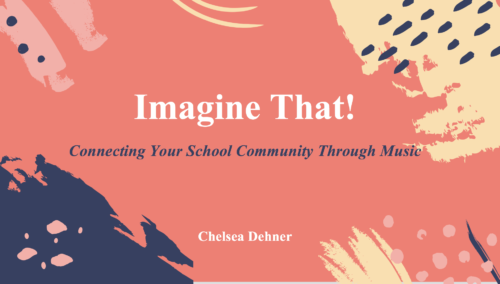
by Chelsea Dehner
(67 slides) This is digital resource. This resource provides everything you need to recreate a music performance project for your staff or your students. Through covering John Lennon's Imagine, school staff can build community and connect with their students, whether virtual or in-person. Use the editable files that accompany this tutorial to create meaning and have some fun with those around you! -

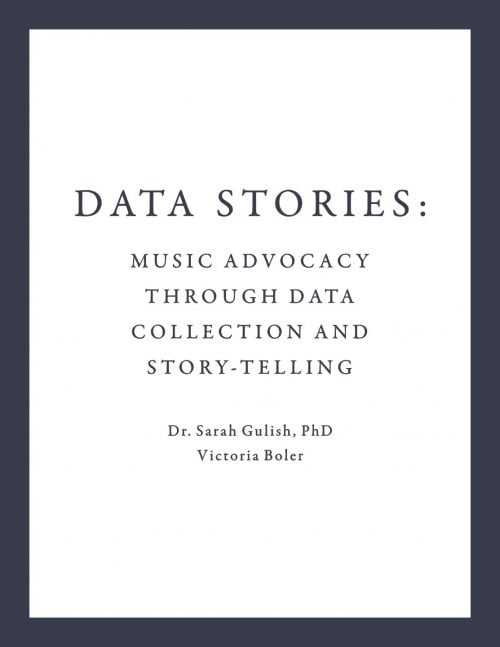
by Sarah Gulish and Victoria Boler
(12 Pages + over 25 pages of editable resources)
This is an eBook for digital download. The purpose of this book is to provide resources for music teachers looking to collect data to better advocate for their programs and reach students. This interactive PDF describes the various types of data, how they can be collected, and how they can be used to create a music program story to share with community members and administrators. Each purchase includes access to a google drive folder with dozens of resources and templates that can be copied and edited, including email templates, google questionnaire forms for students, parents, and colleagues, conversation starters with administrators, sample qualitative stories, sample quantitative stories, and more. -
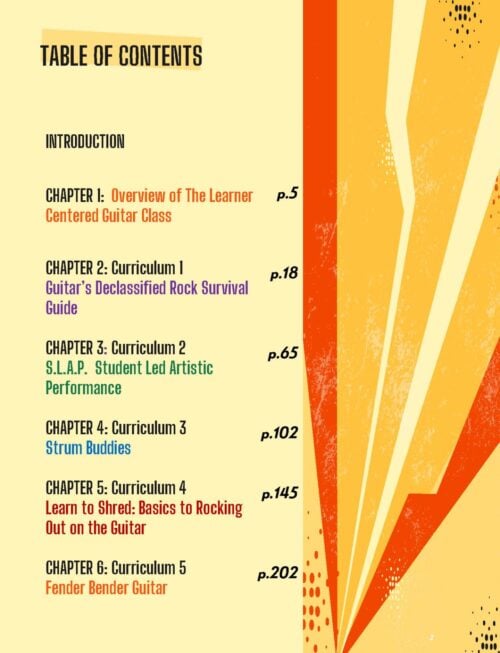
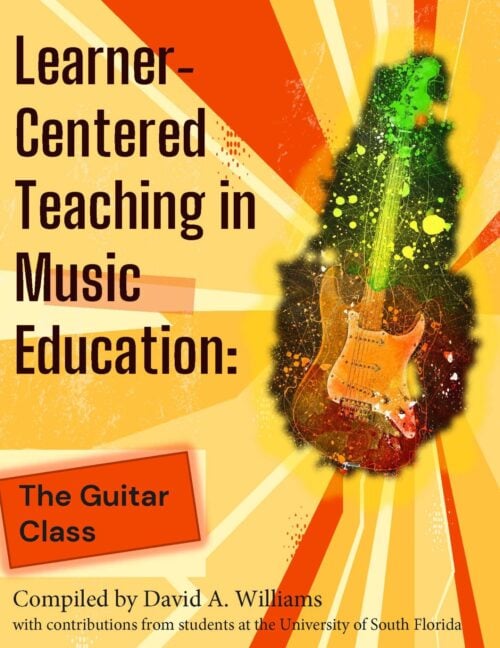
Compiled by David A. Williams
( 459 pages) This is an electronic resource for digital download. This book contains ten curricular settings for guitar classes that are based on learner-centered pedagogical principles. Each class example was created by a pair of undergraduate music education students who were enrolled in a music education methods class designed to build skills in learner-centered techniques. These students were also co-enrolled in an ensemble course where they put their understanding into practice. In addition, they worked with k-12 students in learner-centered practicum settings. While the students lacked full-time teaching experience they were certainly grounded in learner-centered pedagogical concepts. Our hope is that music teachers, at all levels, will find ideas and inspiration in this book. Ideas and inspiration for interesting new music classes that include guitars, and for ways to enhance existing guitar classes. Ideas and inspiration that will stimulate students and help them grow into lifelong music makers. -
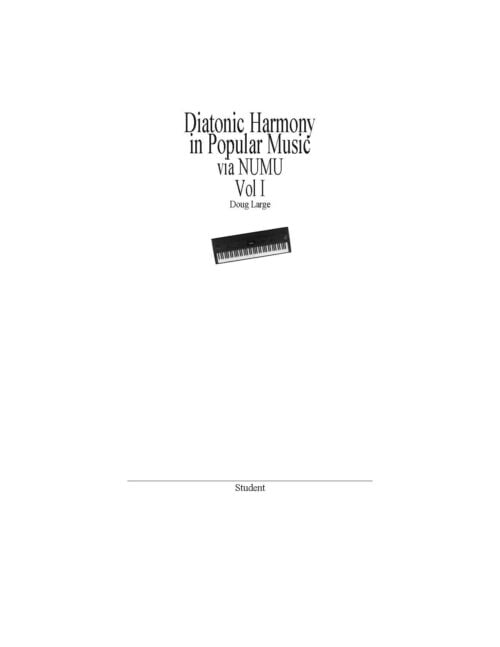
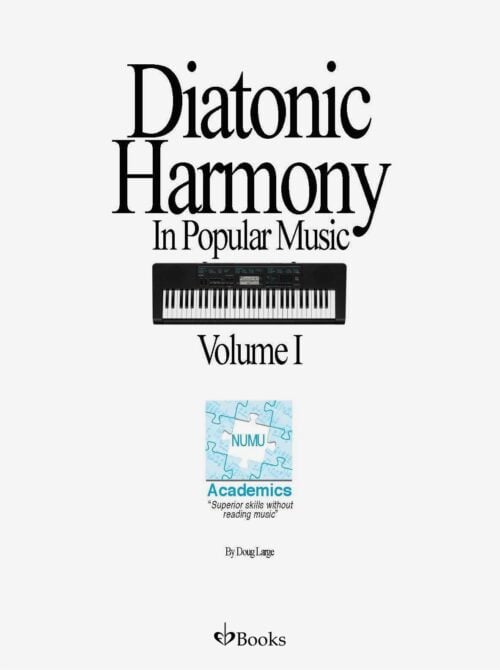
by Doug Large
(60 pages) This is an eBook for digital download. Harmony and Composition made easy with NUMU is designed for the academic calendar with exercises, tests, mid-year and final exams. Once a musician understands even a little harmony (how chords are built) and composition (how chords fit together), it sets them free. An in depth study of Harmony & Composition from a ground-breaking, simplified perspective. Music is based on interval formulas. Only NUMU (Number Music) can clearly illustrate these formulas. This eBook comes with a separate PDF containing midterm and final exams! -
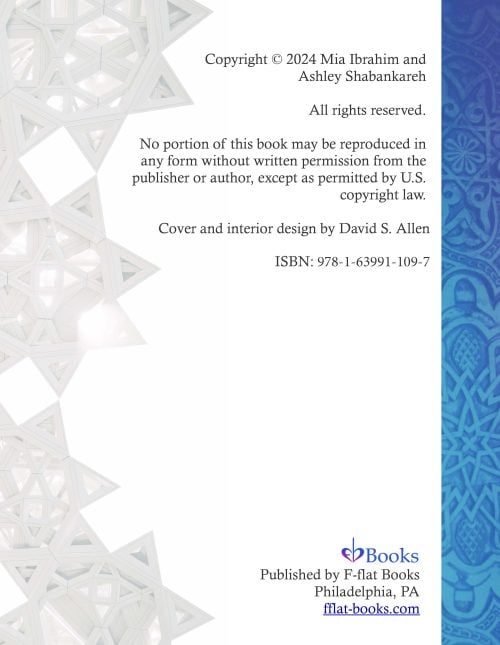
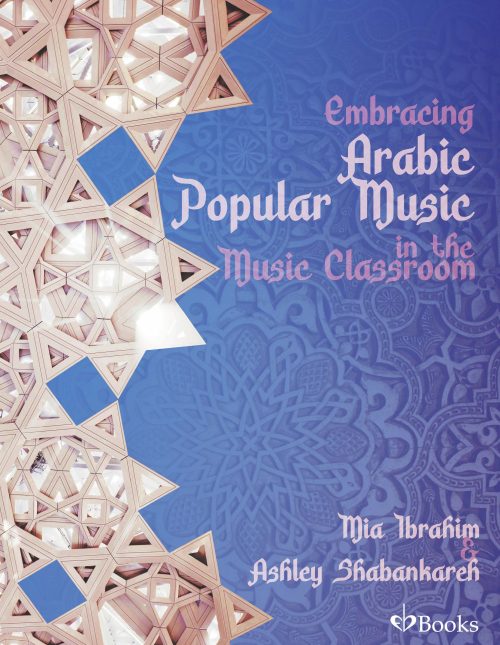 How do you incorporate Arabic popular music into the classroom? This comprehensive guide provides research, strategies, and practical steps for singing, dancing, and playing popular Arabic music with your students. Created by Mia Ibrahim with contributions from Ashley Shabankareh and F-flat community members, this resource is being released to honor the life and work of Mia. Proceeds from this resource will go towards the Mia Ibrahim Scholarship Fund, providing tangible opportunities for music educators to experience and learn how to incorporate popular music in their classroom through professional development opportunities.
How do you incorporate Arabic popular music into the classroom? This comprehensive guide provides research, strategies, and practical steps for singing, dancing, and playing popular Arabic music with your students. Created by Mia Ibrahim with contributions from Ashley Shabankareh and F-flat community members, this resource is being released to honor the life and work of Mia. Proceeds from this resource will go towards the Mia Ibrahim Scholarship Fund, providing tangible opportunities for music educators to experience and learn how to incorporate popular music in their classroom through professional development opportunities. -
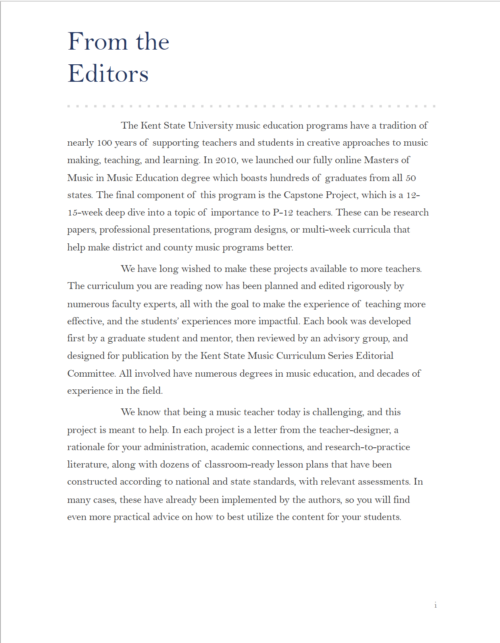

by Chelsea Perrine
(65 pages) This is an eBook for digital download. In this book, you will find research to support a well-rounded and focused education for music students with special needs, templates for goal tracking and lesson planning, and suggestions for lessons and units for your students. This adaptive music curriculum is geared towards secondary-level students. This is the second publication in the Kent State Curriculum Series. -
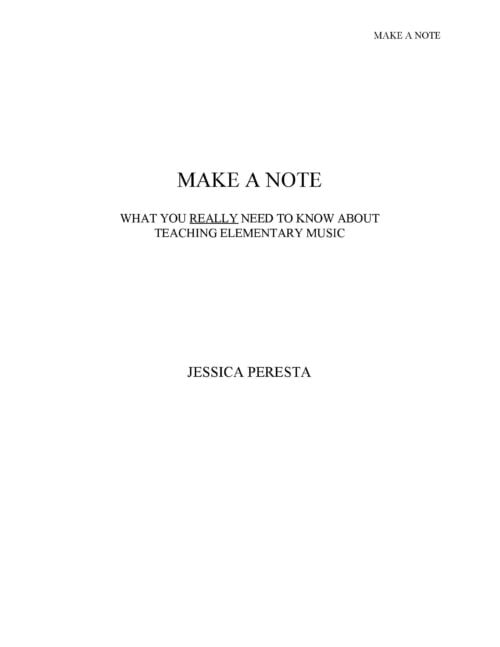
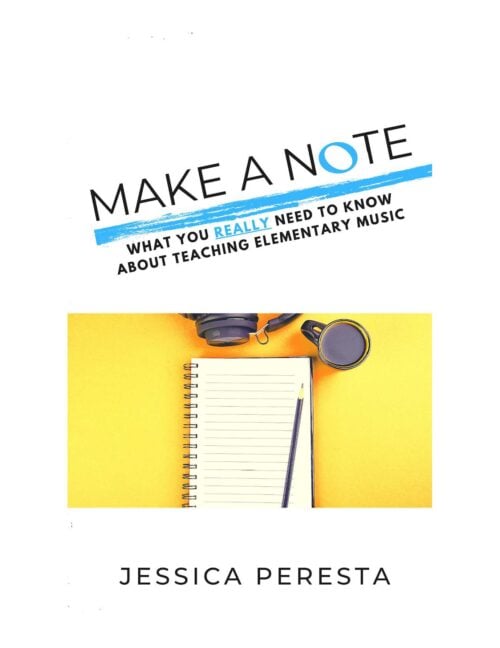
by Jessica Peresta
(74 pages) This is an eBook for digital download. Teaching elementary music is rewarding, yet exhausting, no matter if you’re a new or veteran teacher. There are so many things that happen during any given day, and it can leave you feeling overwhelmed and maxed out when you’re not expecting it. After reading through the pages of Make A Note, you’ll find your confidence, identify feelings that may have held you back, and will feel prepared to tackle any unexpected challenges that may come up during the school year. -

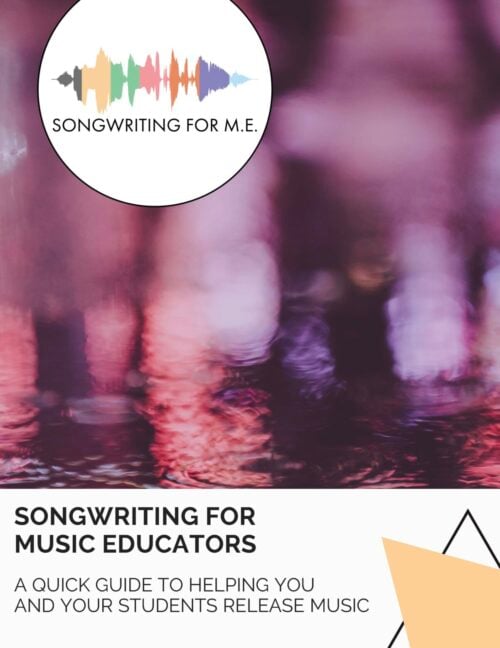
by Kat Reinhert and Sarah Gulish
This is an eBook for digital download. If you have ever thought about releasing original music but don't know where to start, this resource is for you! Whether creating your own music or helping students release their own, this quick guide has ten steps for everything you need to release original music from the authors of Songwriting for Music Educators. -
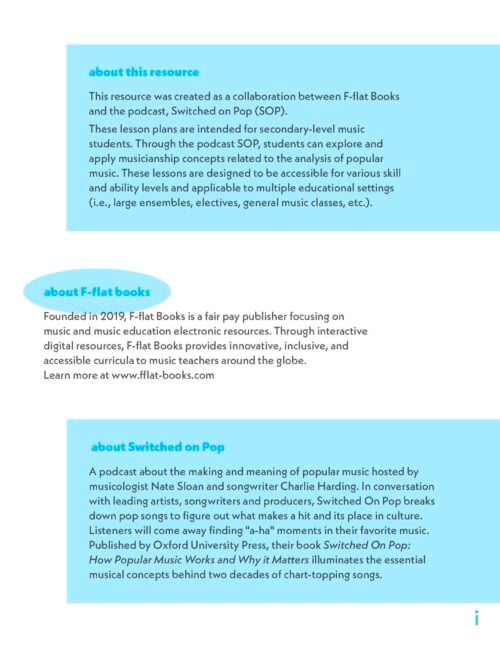
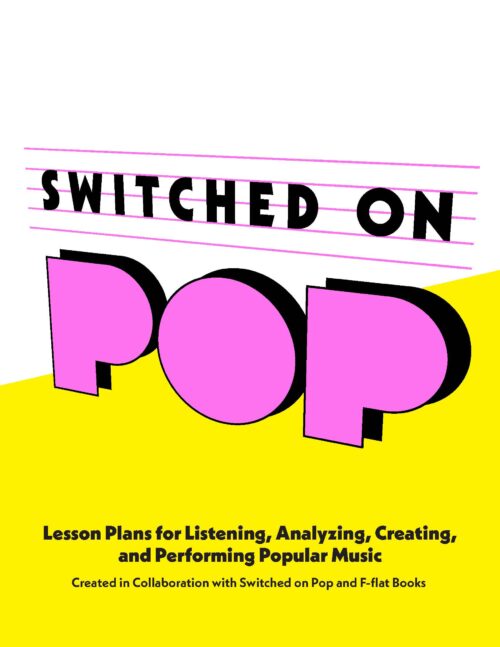
by Sarah Gulish, Danielle Larrick, Rosie Wilson, Gabe Romero, Emma Rolecki, and Peyton Beebe
This is an eBook for digital download with editable student worksheets. This resource was created as a collaboration between F-flat Books and the podcast, Switched on Pop (SOP). Intended for secondary-level music classrooms, students explore elements of popular music and create original work based on specific themes. This resource includes a teaching guide and editable student worksheets. -
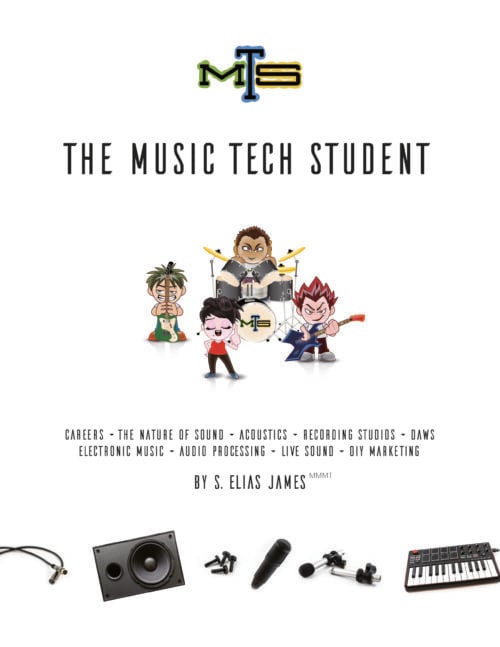
by S. Elias James
(102 pages) This is an eBook for digital download. The Music Tech Student is a compendium of information covering every major music technology topic. It’s a concise and unbiased look at the basics without leaving anything out. You’ll find it’s a fantastic trove of just the right answers to the most common questions from topics including careers, the nature of sound, acoustics, recording studios, DAWs, electronic music, audio processing, live sound, and marketing. -
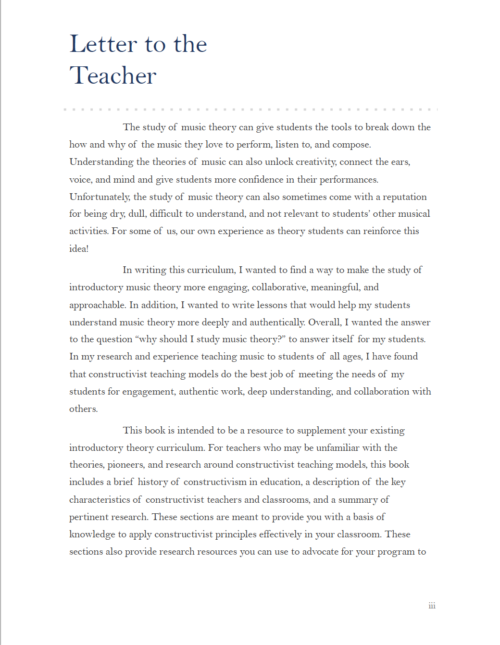
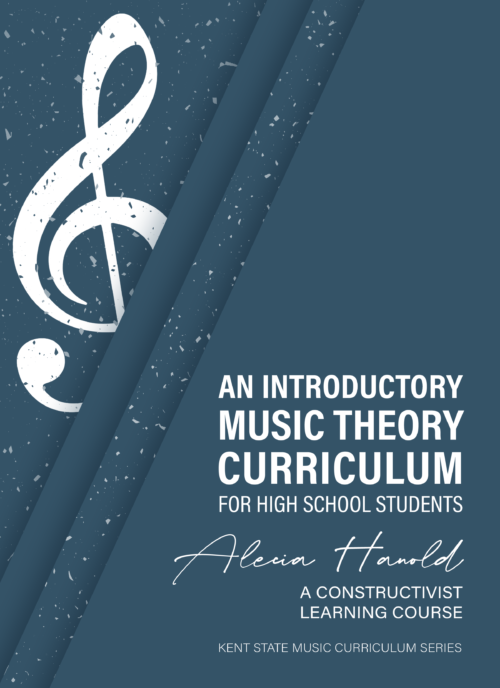
by Alecia Hanold
(189 pages) This is an eBook for digital download. An Introductory Music Theory Curriculum provides a way for teachers to make the study of introductory music theory more engaging, collaborative, meaningful, and approachable for high-school level musicians. This book includes an overview of constructivism and constructivist pedagogy as well as full, detailed lesson plans for ten units of study in beginning music theory. This is the first publication in the Kent State Curriculum Series.


